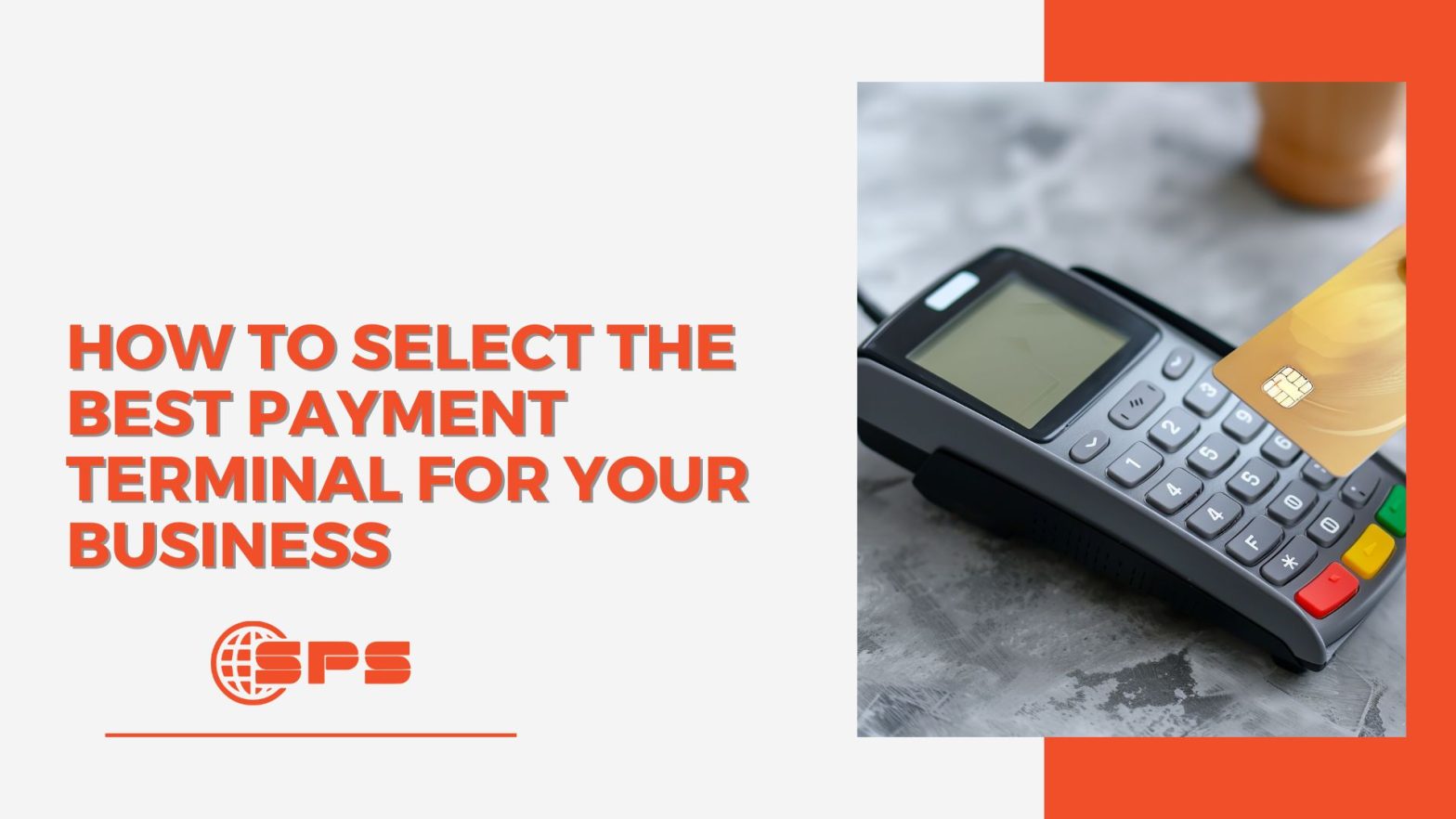How to Select the Best Payment Terminal for Your Business
Choosing the right payment terminal for your business is crucial for maintaining smooth transactions, securing payment data, and providing customers with a seamless experience. Whether you run a retail store, a restaurant, or an online business, selecting the best payment terminal can have a direct impact on your bottom line, customer satisfaction, and operational efficiency.
In this article, we’ll explore how to select the best payment terminal for your business, key features to consider, and popular payment solutions available today.
1. Understand Your Business Needs
Why it’s important:
Different businesses have different requirements when it comes to payment processing. Understanding your needs will help you choose a terminal that suits your business type, volume, and payment preferences.
What you should do:
- Retail and In-store: If you own a physical store, you may require a countertop terminal that can process chip cards, magnetic stripe cards, and contactless payments.
- Mobile Businesses: For mobile businesses like food trucks or pop-up shops, a portable or mobile POS terminal that connects to a smartphone or tablet may be ideal.
- Ecommerce and Online: If you sell online, you’ll need an integrated payment gateway that can accept payments securely through a website.
Choosing a terminal that matches your business operations ensures that you’re not paying for unnecessary features or missing key functionalities.
2. Evaluate Payment Methods and Compatibility
Why it’s important:
Customers today expect various payment methods, including credit/debit cards, mobile wallets (Apple Pay, Google Pay), contactless payments, and even EMV chip cards. Selecting a payment terminal that supports the payment methods your customers prefer is essential for maximizing sales.
What you should do:
- Support for Major Payment Methods: Ensure that the terminal supports popular payment methods, including credit cards, debit cards, NFC/contactless, and mobile wallets.
- EMV and PCI Compliance: Make sure the terminal is EMV-compliant (chip card compatibility) and follows PCI DSS security standards to protect customer data.
The more payment options you offer, the easier it will be to cater to a wider range of customers.
3. Consider Transaction Volume
Why it’s important:
Your business’s transaction volume should dictate the type of payment terminal you choose. High-volume businesses need terminals that can handle quick, frequent payments with minimal downtime.
What you should do:
- High Transaction Volume: If you process a large number of transactions per day, look for high-speed terminals with fast processing capabilities and reliable uptime.
- Low to Moderate Volume: If your business handles fewer transactions, a basic POS terminal that is simple to use might suffice, saving you unnecessary expenses.
Choosing a terminal that can handle your expected transaction volume ensures faster transactions and a smoother checkout experience for your customers.
4. Assess Ease of Use and Features
Why it’s important:
A user-friendly payment terminal can reduce training time for employees and improve the customer experience. Look for a terminal with intuitive features, an easy-to-read display, and simple buttons.
What you should do:
- Intuitive Interface: The terminal should be easy for your staff to operate. Look for clear navigation and a touchscreen interface (if applicable).
- Receipt Printing & Reporting: Ensure the terminal can print receipts, and provides transaction reports for tracking sales and monitoring daily activity.
- Connectivity Options: Check if the terminal offers both wired and wireless connectivity options (Wi-Fi, Bluetooth) for flexible payment acceptance.
The easier the terminal is to use, the faster and more efficient your business operations will be.
5. Look for Security and Fraud Prevention Features
Why it’s important:
With cybercrime on the rise, it’s critical to choose a payment terminal that offers robust security features to protect both customer data and your business. Fraudulent activity can result in significant losses and damage to your business reputation.
What you should do:
- End-to-End Encryption (E2EE): Choose a terminal that supports E2EE, which ensures that customer payment information is securely encrypted throughout the transaction process.
- Tokenization: This feature replaces sensitive card data with a unique identifier (token), reducing the risk of data breaches.
- Compliance with PCI DSS: Ensure the terminal is compliant with Payment Card Industry Data Security Standard (PCI DSS) to keep your business in line with security requirements.
By selecting a terminal with the highest level of security, you can reduce the risk of fraud and protect your customer’s data.
6. Consider the Cost of the Terminal
Why it’s important:
The cost of payment terminals can vary greatly based on features, brand, and payment processor. When choosing a terminal, it’s important to find a balance between features, quality, and price.
What you should do:
- Compare Costs: Shop around and compare prices for terminals that meet your needs. Take into account any monthly or transactional fees associated with using the terminal.
- Lease vs. Purchase: Decide whether leasing a terminal or purchasing one outright makes more sense for your budget. Leasing may have lower upfront costs but could result in higher long-term expenses.
Ultimately, you want to choose a terminal that fits within your budget while providing the essential features your business needs.
7. Integration with Your POS System
Why it’s important:
If you’re already using a Point-of-Sale (POS) system to manage your inventory and sales, make sure the payment terminal you choose integrates seamlessly with your system. This eliminates the need for manual data entry and streamlines your checkout process.
What you should do:
- Check Compatibility: Ensure that the terminal is compatible with your existing POS system or software.
- Integrated Features: Look for terminals that integrate with inventory tracking, customer management, and sales reporting, so you can manage everything from one place.
Integration with your POS system will help reduce errors, streamline your business operations, and improve efficiency.
Conclusion: Choose the Right Payment Terminal for Your Business
Selecting the right payment terminal for your business is an investment in efficiency, security, and customer satisfaction. By evaluating your business’s needs, considering transaction volume, and choosing a terminal that’s easy to use and secure, you can ensure that your payment process is smooth, cost-effective, and hassle-free.
If you’re ready to explore payment terminals that fit your business needs, Stellar Payments Systems offers a variety of payment solutions that integrate seamlessly with your business operations. From secure transactions to flexible payment methods, we can help you choose the best terminal to enhance your business operations and increase profitability.
Visit www.stellarpayments.com to find the best payment terminal for your business today!

